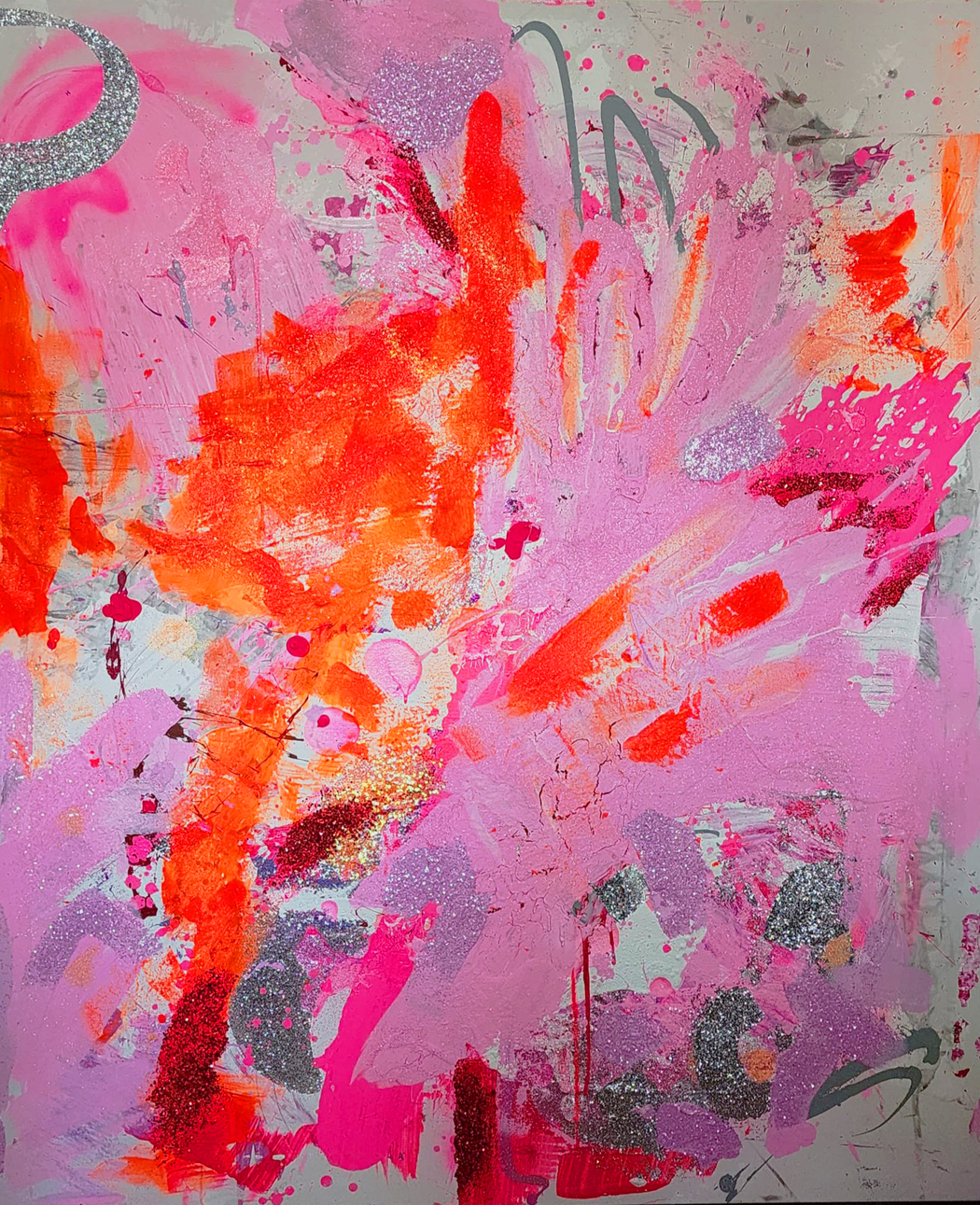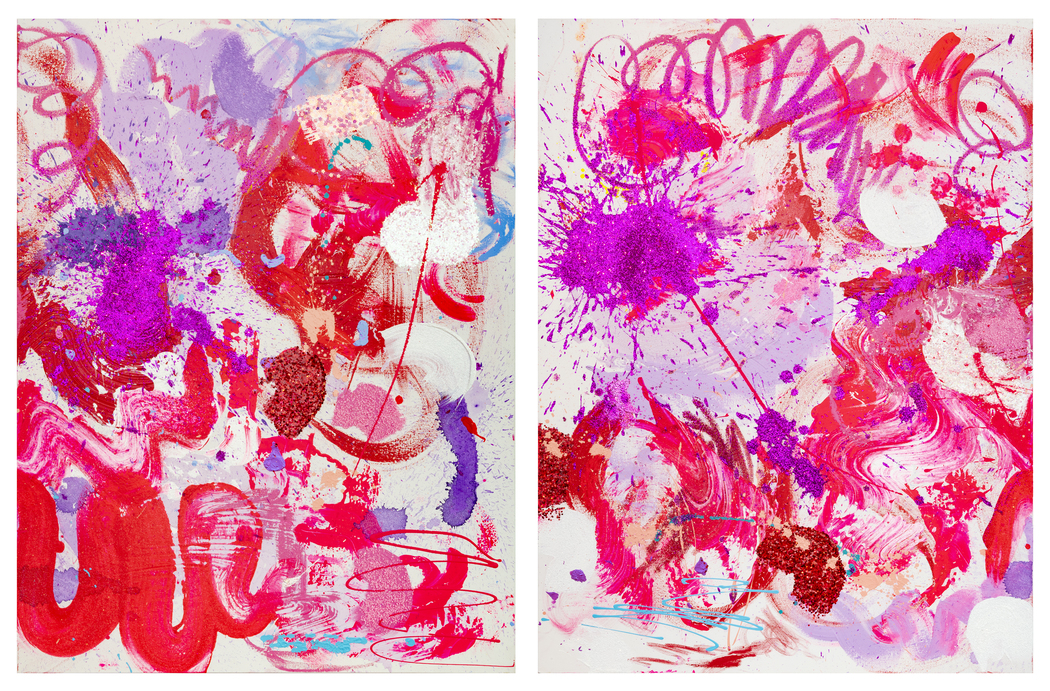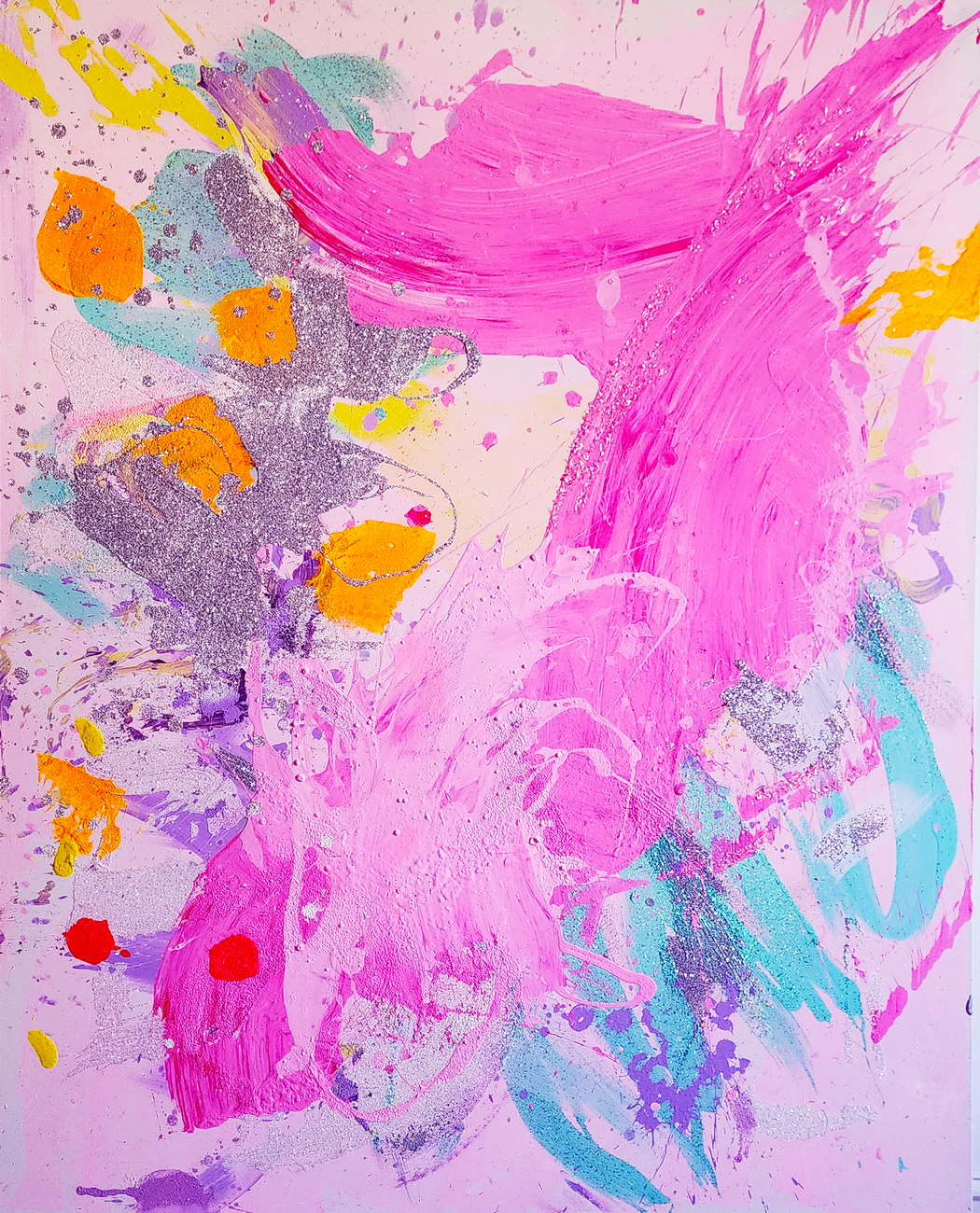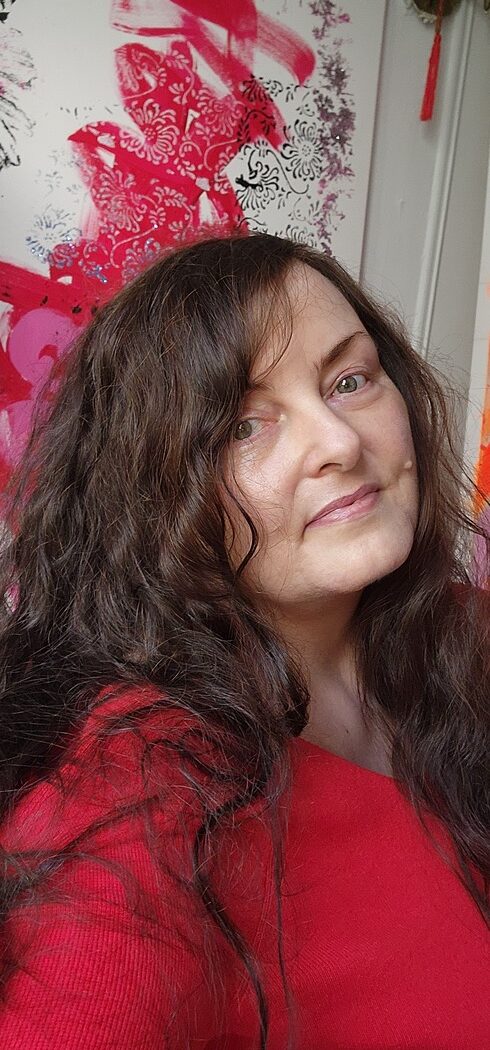Dunja Messer-Jourdain
How did your family’s background in bespoke tailoring influence your journey into art?
I simply grew up in a creative environment where plans were discussed, made and executed at a pace that created a sense of excitement and with materials that I was attracted to and were a pleasure for me to handle, early on- and I was involved, or I involved myself. Lol. There was a lot going on. Precision, craftsmanship and attention to detail were valued. That early feeling, that I can now recognize, as an adult, as a sense of fulfillment from having followed the creative process all the way through to the final product, is something that never left me. In other words, the bespoke tailoring background introduced me to a real, backstage version, so to speak, creative process that involves work as well as the ability to dream and imagine. This ethic is an integral part of making art.
What inspired you to blend fashion design with abstract painting?
It started out with fashion design for me because I had access to a great deal of fine fabrics. Those fabrics were more than an education in color and texture. It became a lifelong fascination. For me, working with fabrics was more of a creative endeavor than a purely technical one. In fact, I created my early patterns by eye, without bothering to measure. I was combining and using materials to create a piece, a garment that would be a conduit of self-expression. Eventually, I became interested in other mediums. The core inspiration remains the same.

Could you share more about your experience studying textile design in India and how it shaped your approach to art and fashion?
I wanted to know more about how exquisite fabrics are made and through a company that is dedicated to fair trade, I was able to get in behind the scenes of Asian fabric production from silkworm farms to the entire Indian villages dedicated to hand loom production. In my position I was also given the opportunity to create designs for printed fabric.
Studying in India, a country rich in textile traditions and techniques, exposed me to a wide array of cultural influences. This influenced my aesthetic sensibilities and color choices. I am more inclined to experiment with unconventional materials, techniques and forms than I would have been otherwise.
Learning about textile manufacturing gave me a strong foundation in the understanding of different materials, techniques, and processes. This knowledge translated into innovative ways of incorporating textures, patterns, dying techniques, weaving techniques, and print, etc. into art and fashion designs.
How do you balance your roles as a painter and fashion designer? Do these two creative fields influence each other in your work?
I am in love with fabrics and different creative materials in general. Sometimes I find myself purchasing a fabric just to own it. It simply gives me so much pleasure. While I went through a phase of collecting Japanese fabrics used in wedding ceremonies, I nowadays am more into novelty fabrics with rich textures, for example French dotted tulle or Italian metallic brocades. This is eye candy for my senses and gives me lots of inspiration for my paintings.
The color-palettes, textures, and patterns I experiment with in my paintings often find their way into my fashion collections, and vice versa. This interplay keeps my work dynamic and fresh.
 Dunja Messer-Jourdain | With Roman Candle
Dunja Messer-Jourdain | With Roman Candle
Your art celebrates femininity and explores its evolving standards. What aspects of femininity do you find most inspiring, and how do you express them in your paintings?
Women are feral, curious, playful, flirty, coquettish, adventurous, passionate, moody and open to the use of vibrant color to attract, uplift and express. Women are often the catalysts of the memorable events and, dare I say, drama in life. I express all this, the hidden, and the unspoken with color, texture and shiny objects on canvas.
You use reflective materials such as glitter in your artwork. What role do these materials play in conveying your artistic message?
These materials serve as a metaphor for the feminine spark- luminosity, and brilliance but also strength. The interplay of light and texture created by these materials adds depth and complexity to my pieces, inviting the audience to engage with the art more closely.
 Dunja Messer-Jourdain | Pink green
Dunja Messer-Jourdain | Pink green
How does living and working in New York City impact your creativity and artistic style?
New York is frenetic and demanding in so many ways that most people are familiar with, but one can find a way to do things your own way and not worry about say, necessarily matching your outfit if you’re too busy thinking about your project or just don’t care today. I learned to trust myself in New York to listen to myself more seriously because in New York quite often the only way is to go your own way.
The city’s energy, diversity, and relentless pursuit of excellence serve as catalysts for pushing boundaries, fostering innovation, and shaping unique artistic perspectives.


Leave a Reply